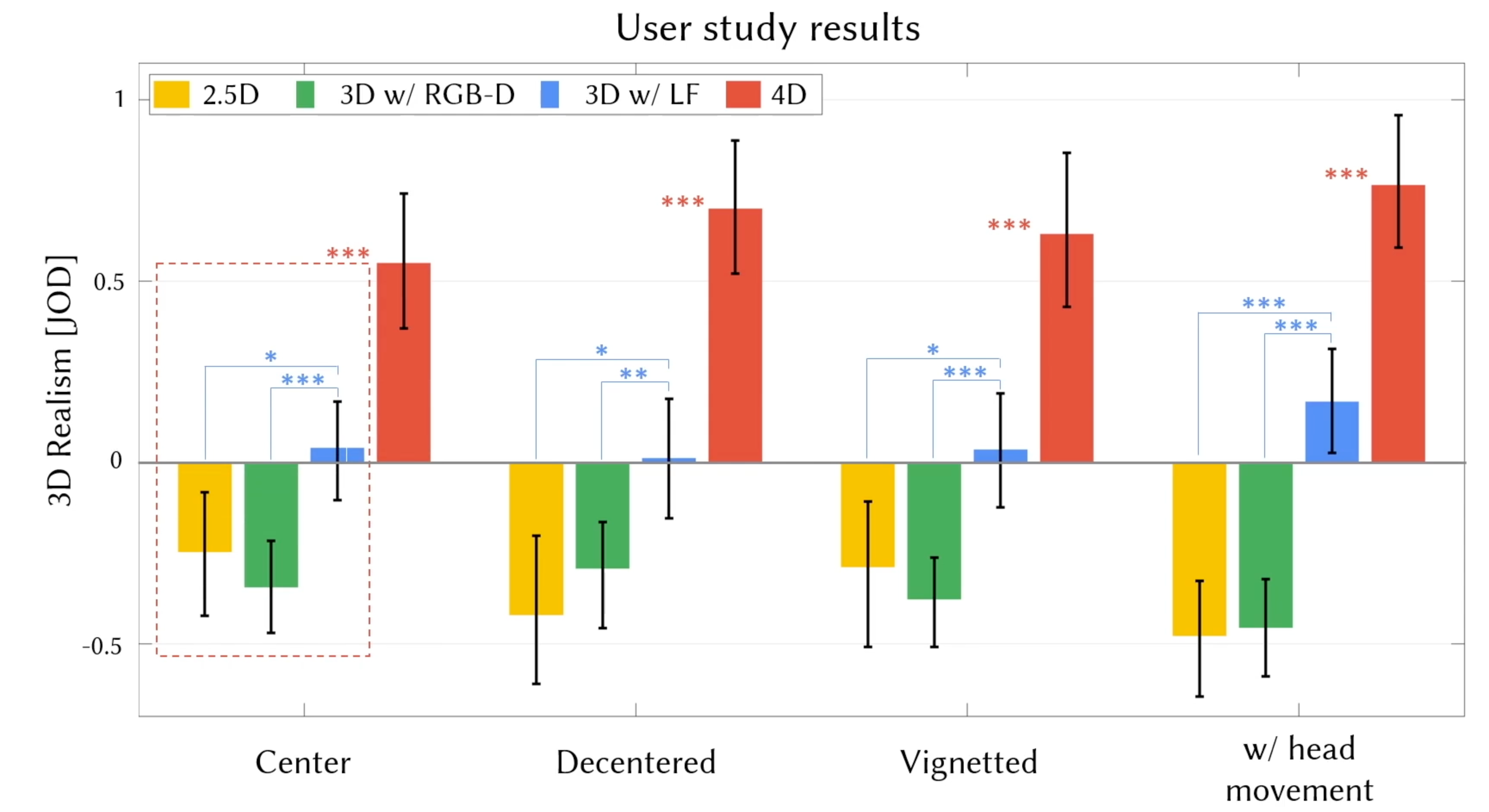ABSTRACT
Holographic near-eye displays are a promising technology to solve long-standing challenges in virtual and augmented reality display systems. Over the last few years, many different computer-generated holography (CGH) algorithms have been proposed that are supervised by different types of target content, such as 2.5D RGB-depth maps, 3D focal stacks, and 4D light fields. It is unclear, however, what the perceptual implications are of the choice of algorithm and target content type. In this work, we build a perceptual testbed of a full-color, high-quality holographic near-eye display. Under natural viewing conditions, we examine the effects of various CGH supervision formats and conduct user studies to assess their perceptual impacts on 3D realism. Our results indicate that CGH algorithms designed for specific viewpoints exhibit noticeable deficiencies in achieving 3D realism. In contrast, holograms incorporating parallax cues consistently outperform other formats across different viewing conditions, including the center of the eyebox. This finding is particularly interesting and suggests that the inclusion of parallax cues in CGH rendering plays a crucial role in enhancing the overall quality of the holographic experience. This work represents an initial stride towards delivering a perceptually realistic 3D experience with holographic near-eye displays.

